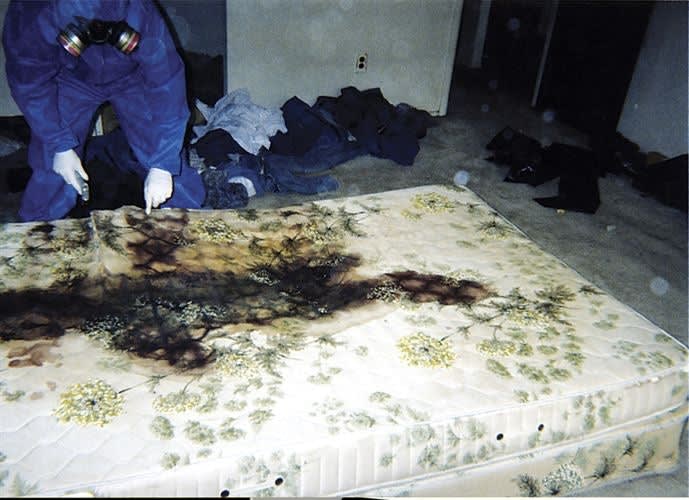Before OSHA began to establish standards for dealing with blood-borne pathogens and other hazardous materials in 1991, families hauled dumpsters to their front yards and tossed bloody sheets, carpets, and furniture into them for disposal at the local dump. And at apartment complexes, panicked landlords would call in the super to scrub up the massive stains, pick skull fragments out of the sheet rock, apply a little spackle, and try to make the unit look like it had never been the scene of violent death.
When the standards changed and costly training and equipment were required by law, there was suddenly a need for specialists to do the job. Under the new regs even coroners didn't have the stuff to handle the cleaning of bio wastes at crime scenes, and traditional cleaning services quickly decided that the protective gear, licenses, liability insurance premiums, disposal fees at special facilities, and hepatitis B inoculations for all employees made crime scene cleaning unprofitable. This must have left quite a few workers feeling relieved.
To fill the void, a small industry slowly began to develop. People accustomed to the horrific aftermath of crime scenes-firefighters, paramedics, forensic anthropologists, and cops-began to open specialized companies.
In 1996, there were fewer than a dozen companies offering crime scene cleaning services. Now there are hundreds. And each year, more companies enter the fray.
Some cleaners are in it for the money and some get in because they have the unique ability to stomach a job that most people wouldn't be able to perform for any amount of money. Still other companies have been started by people who wanted to help families who are coping with the violent deaths of their loved ones.












